BrainscarGames
joined
This member has provided no bio about themself...
Rocket Potato is designed to be accessible. Single-touch control should provide easy-of-play for gamers who don't have full use of their hands. It is also color-blind friendly, which is a fortunate byproduct of all the art being created by a colorblind dev. I'm also aiming for inclusion because it is one thing to make an extra effort to help the disabled enjoy the same things the "abled" enjoy, and another to actually make them a part of the experience in the same way as anyone else. In the spirit of inclusion, I'm happy to introduce Fritz; one of the pedestrians that inhabit the street level.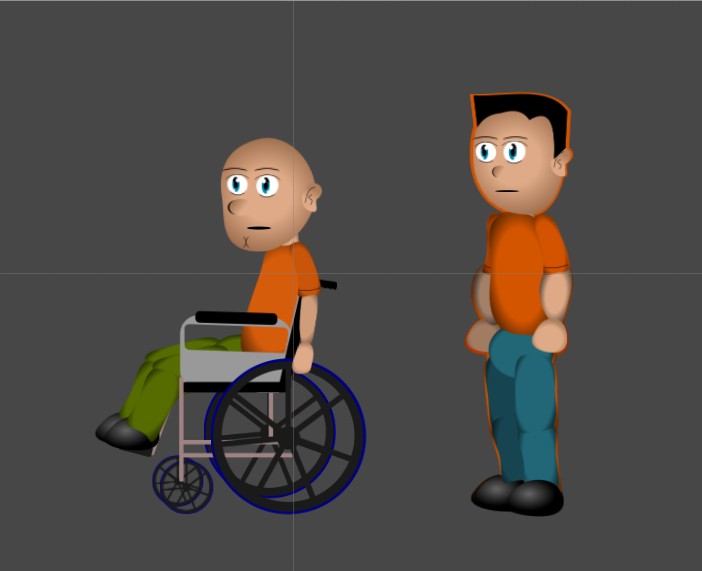
Fritz is in every respect exactly the same as other pedestrian characters. He has a tether. He detects drop-offs and avoids them. He knows when he is running into a wall and reacts accordingly. He can be kicked and scorched, and gets angry when he takes damage, turning him hostile and causing him to chase and attack the player.
A little further into the project, Rocket Potato will feature bonus missions in which other devs can showcase themselves and their games. Arpy will have to enter a dev studio to secure an early copy of a game. The Brainscar Games room is done. In runtime, the eyes of the people in the studio will follow Arpy as he moves around.
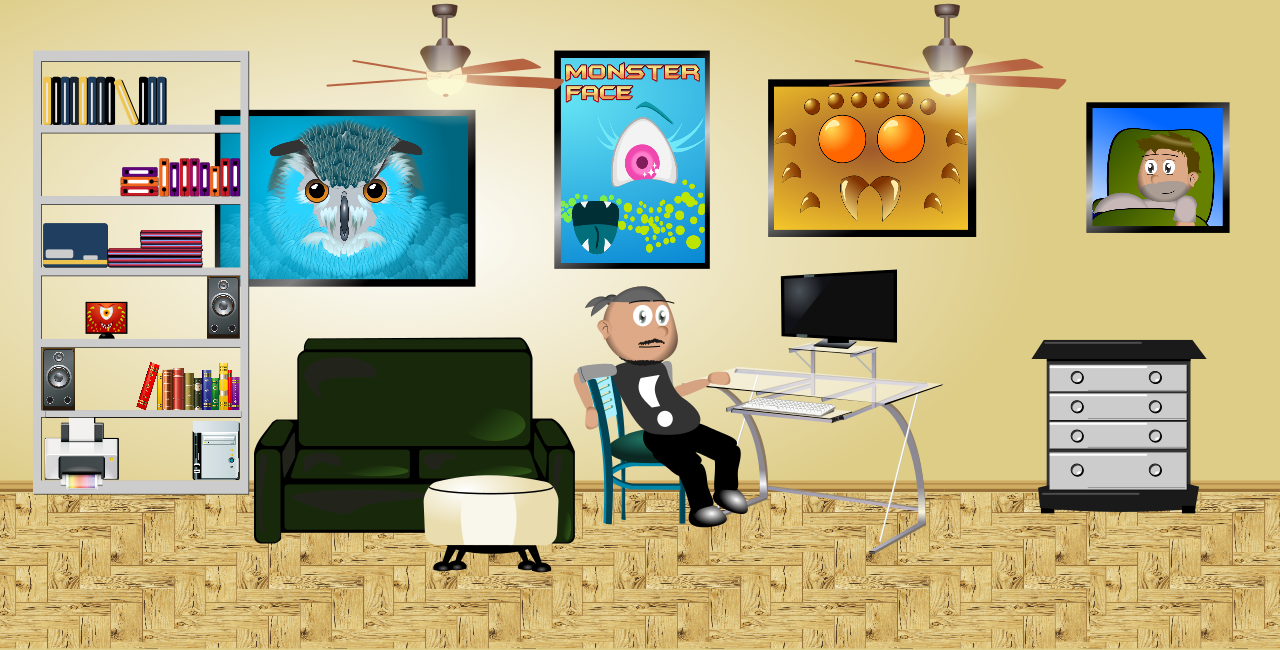
If you are an indie interested in a cameo, keep checking back here for instructions
For about a month, I ran a survey intended to find out more about my target audience; who they are, and what they like. The results helped me immensely in answering some questions I had about development choices. Let me show you what I mean, and what I've learned from it:
Ages of people the survey reached:

My target audience is males 18-35, but most of the gamers I'm reaching are under 18. So, I did a little reading and discovered that even AAA studios target younger and younger gamers when marketing, even if the game is 18+. I couldn't find a straight answer as to "why", but I assume it is for this very reason. Younger gamers are online a lot talking about games and talk about games a lot offline as well. An 18+ target audience spends less time reading and talking about games because that takes away from actual playing time. So, in order to get the word out to an audience of any age group, targeting 14-17-year-olds is the way to go.
How much time a day do you spend gaming?
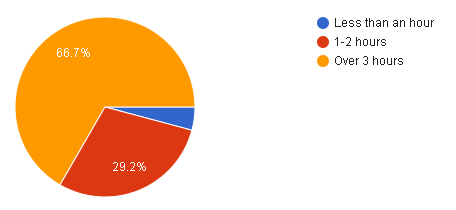
My audience plays at least 2 hours a day on average. That means, my players are going to need to remain engaged for longer periods of time. Rocket Potato must not try to create instant thrills for short gaming sessions with time gaps in between. How do you keep a player engaged for long sessions? I knew the answer to this one: Emergence!
This game doesn't have much narrative, so telling a compelling story is out. I must create emergence through actual gameplay. So far, Rocket Potato's missions pop up in random order. That means they all have the same level of difficulty. That doesn't mesh well, so I'm scrapping that concept and making the missions appear sequentially. That way, I can increase the game's difficulty a little with each mission.
How do you prefer to play games?

A tie between PC and consoles, beating out mobile devices significantly. Since developing for consoles is so much more expensive than PC, and everyone taking the survey obviously has a PC they spend plenty of time on, my choice for primary target platform is clear.
It is becoming clear that developing for multiple platforms at once may be time efficient, and good from a development standpoint, but bad from a marketing standpoint. I've tried to create Rocket Potato with features that will be compatible with every platform and sabotaged my ability to focus on making my game the best it can be for the audience that will be playing it the most. A multiplatform game runs the risk of fitting everywhere, without being a perfect fit anywhere, if that makes sense. Therefore, I will be developing first for PC only. Later I will revamp the game to be as suitable as possible for the next target platform, and so on. It will take more time and effort, but each version will have more of what the players want. A happy player is a returning player.
How many hours do you think a platform game should take to complete?

Because I was initially developing with mobile devices in mind, I didn't plan for too many missions. I didn't need them because the main level is procedurally generated to present fresh challenges each time one of 8 random missions is played. Since missions will now be in sequential order, with an actual game ending, I need to redesign for playing time. A mission will take about 20-30 minutes to complete. 4 hours is clearly not enough. Since I need to aim for a minimum of 10 hours, I need at least 20 individual missions. Time to roll up my sleeves, I guess.
How much would you pay for a game of that length?

This one was a little tricky because people didn't always match their time and price answers. Quite a few people actually entered 10 hours for $19.95. At this point, I know I'm not developing for mobile right now, so free with ads isn't an option. It is interesting that not a single person picked $14.95. Prices just under a multiple of 10 must just be more appealing to the subconscious.
The averages tell me I should be making a 10+ hour game and charging $9.95. Since aiming high rather than doing the bare minimum should be aspired to, I'm shooting for around 20 hours. I plan on charging $14.95 so that I can do frequent sales.
I also asked people to tell me the name of the last platformer they enjoyed playing for long periods of time, and why. I got a large variety of answers, but the most common were: variety in levels, increase in difficulty, variety in levels, and the urge to complete objectives, especially hidden ones. This confirms that focusing on emergence through difficulty is the right call to make.
I also gave survey-takers the option of leaving their e-mail address if they are interested in getting updates on the project. Quite a few left one, and any marketer will tell you that having a group of people who have opted to be informed by you are awesome. They don't know it because I didn't want to taint the survey pool by offering rewards, but every one of those e-mail addresses will be getting a free copy of Rocket Potato when it is complete, possibly an early access version as well if there is one.
My thanks to everyone who participated in the survey. You see how tremendous a help this information has been to me in directing this project. I hope Rocket Potato will live up to be everything you want it to be.
One thing I’m learning is that it is never too early to think about is Marketing. When I released Monster Face, I didn’t do any marketing beforehand and only showed very little content to small online circles. Monster Face didn’t sell well, but I consider it a success. I earned back what I put in, and I completed an entire project, from concept design all the way to release on a public platform. A lot of indies never hit the release stage, because it is so easy to become distracted by newer ideas, and unfinished projects get left behind. I finished what I started. I’m immensely proud of that.

This time around, I’m trying to use what I’ve learned and do better. That includes errors on the marketing front. I joined some online indie communities, attended some gatherings of my fellow developers, handed out some custom-made business cards, kept a development blog, and made an effort to nurture contacts I had made in the business. Most recently, I conducted a survey. Here’s why:
From my work with other studios, it had become habit and routine to develop for multiple platforms at once. I hadn’t even heard the term “Marketing Plan” until recently, so I didn’t know the pitfalls of that kind of general development plan. I only saw the up-side, which was being able to release to multiple platforms simultaneously. Surely, that would double, or even triple sales. Right? Well, it didn’t, and I didn’t understand why until I learned a little about marketing. To be fair, marketing wasn't our job. That's what publishers are supposed to do. They often don't, or promote themselves rather than the games they publish. Devs should always know how to market their own games. These are your babies. Claim responsibility for sending them into the world with the best possible chance to succeed.
I happened to see a link Alex Erhardt shared on facebook to his website www.gametomarket.com. What I found might as well have been titled “Things I wish I had known when making my first game”. I eagerly absorbed everything it had to teach me, and was prompted to immerse myself in dozens of similar guides and articles, both from the game development world and finances and general entrepreneurship. One question I was presented with that was the most pressing at the time was “How exactly do you plan to be paid for your game?” That’s easy. I want to charge up front for PC and consoles, and for mobile I could make the game free, but include some advertisements and maybe an option to watch an ad video for an extra life when you die. But then something occurred to me that I had never thought of before: What kind of payment method does my target audience prefer? And crap! Who exactly is my target audience?
I had described my target audience in my design doc as males ages 15 to 45. Most women may not find the game’s theme appealing, and parents may want to consider not letting their kids play it if they believed they might be receiving the wrong message. That was a very general and easy assumption of my audience. I still couldn’t picture exactly who would play my game.
Australian dev Matt Hall (Crossy Road) has an interesting method for determining target audience. He makes his games for one single person. When important design questions come up, he asks “Is this what our target person would like or dislike, or even care about?”. That seems like a solid approach, so I did that. I created a fictional person named Ryan, that I thought would be most likely to identify with my game’s main character, Arpy. I went to the lengths of researching cultural statistics from different countries and American states, cross referenced interests, and did everything to make Ryan as detailed as possible. Ryan was as fully fleshed-out as any of the plot-vital NPCs I used to create for my tabletop campaigns. Ryan was ready.
Ryan was not the kind of person who buys video games at all.
Back to the drawing board. Hey, you know who would love this game? Ethan from the webcomic CTRL+ALT+DEL (www.cad-comic.com). I’ll make it for him. He definitely buys video games. I stuck with this for a while, and when design questions came around, I asked myself if Ethan would be enthusiastic or disgusted by choices I was about to make. This is why Rocket Potato has so many explosions. But, when learning about games marketing, I realized that I had no real solid intel on how Ethan actually prefers to pay for games. I couldn’t ask him. He’s a comic character. I could take guesses or maybe write Tim Buckley and hope he indulges me, but that when it comes down to it, asking just one single person is no way to get the scope of information you really need to market a product. So, I had to redefine my target audience. Again.
The traditional core gamer is male and between 18 and 35 years old. They have the most freetime, and the best hardware on average. Ok, let’s go with that. Rather than going into more detail or narrowing down that group, I took that as a guideline without excluding other gamers, and did what may be my smartest marketing move to date. I went to places where gamers hang out, and I conducted a survey. Why aren’t more indies doing this? I have no idea, but it was the best and fastest marketing information specifically for my needs that I had ever gotten. Ask the players. It’s really a no-brainer.
After 2 days of running the survey, I have already learned much more than I had anticipated. As I write this, the survey is still ongoing, and if you would like to help, you can do so at Goo.gl.
I look forward to sharing my finding in my next entry. Stay tuned!
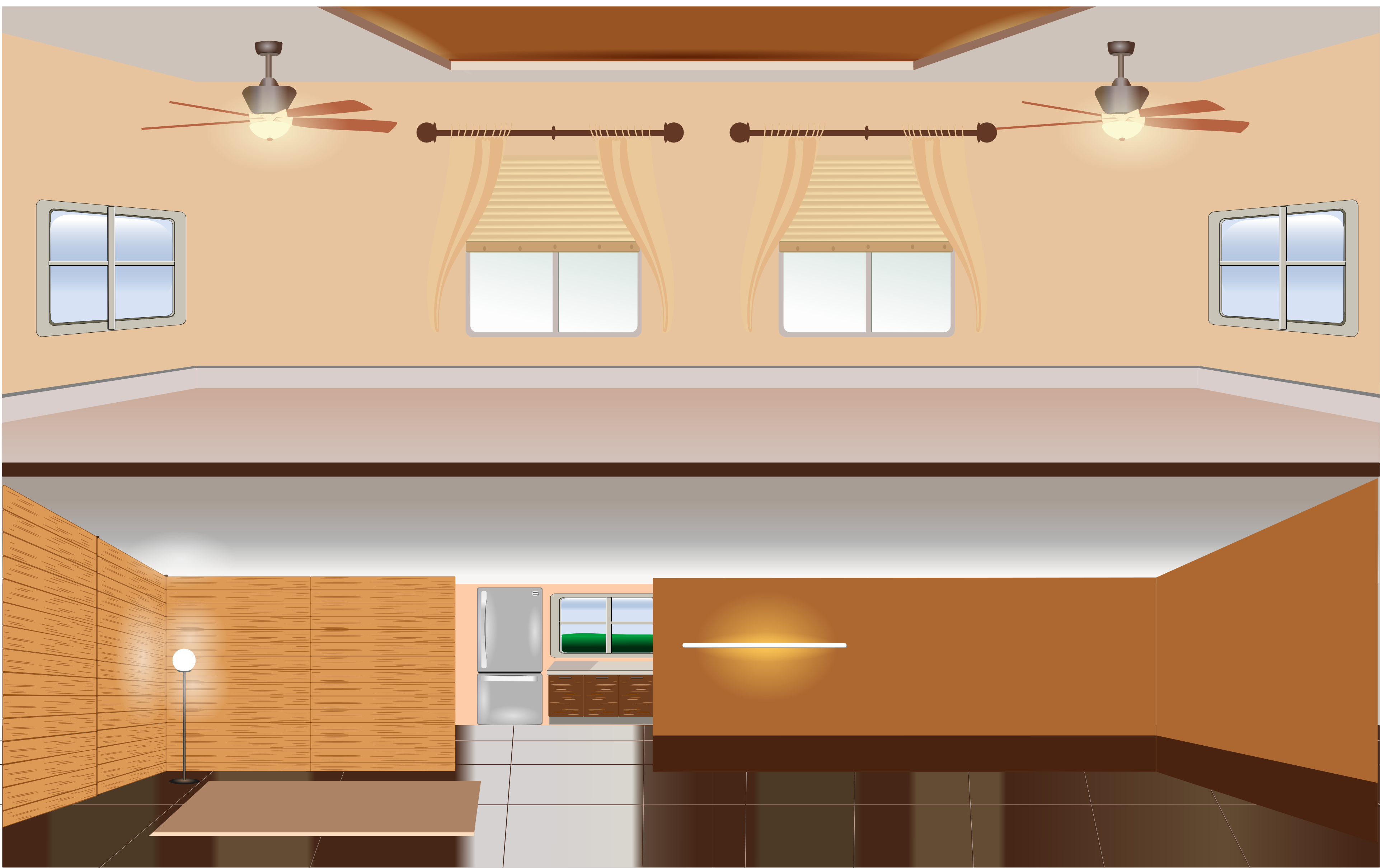
With the street level pretty much wrapped up, Arpy needs his own place to hang his rocket-powered hat. The living room is where all missions start. It's also where Arpy will keep trophies on display that the player can collect for completing objectives. The living room is a safe place to practice the controls, check your achievements and tinker with settings.
Here are some of the trophies Arpy will be able to collect and display:








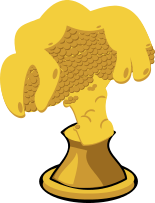


In the spirit of accessibility I finished integrating control options this week. There are 3 ways to steer Arpy. On PC, there are standard WASD controls, with space bar for actions. The control keys are customizable, and you have the option of putting all actions (kick/fly/boost) on the same key to personalize your style of play. For mobile, I've built a virtual joystick and an action button. Those both work great, and I designed them in a way that will make it easy to port to console if that ever becomes available.
I'm most proud of the direct control option, which lets you control Arpy with a single touch on mobile, the cursor on PC, and will even work for consoles. Touch the screen or hold down the mouse button to make Arpy move towards it on the horizontal and vertical axes, tap or click briefly to kick. If touch or cursor gets far enough away from Arpy, he boosts sideways for increased speed. In testing, I've found this control option to be intuitive and easy to use. I think it will go over quite well, and should make them game easy to play for gamers with disabilities such as arthritis
The Street level of Rocket Potato has all the graphical assets it needs to be built. I have a scene constructor that generates the level randomly, using them. But, without people, a street is just a static thing. So I've created some pedestrians to give it some life.
Now, I realize I'm a novice at digital art and animation. These aren't exactly AAA assets. But, I do feel they fit well into the game atmosphere and style, and that might be the most important thing, and I'm proud of what I've learned to create while making this game, so far.
Here are some video of the male and female pedestrians that inhabit the Rocket Potato street.
As mentioned in the previous post, I don't often have reliable chunks of time in which to craft content. So, when I can, I'm very excited about it. If Rocket Potato is new to you, previous devblog entries are located at rocketpotatogame.blogspot.com
So, here's whats new. Great news! The primary and largest level of the game has a complete set of graphic assets! There are also some interactable objects and some platforms to move around on. It took me ages to finish the strip mall part of the level, in part because my graphics skills have improved a bit since I started the suburban area, and I've become a little pickier. Unless I have time to go back and touch up older assets, that means there may be a visible difference in assets like the small family store in the suburbs:
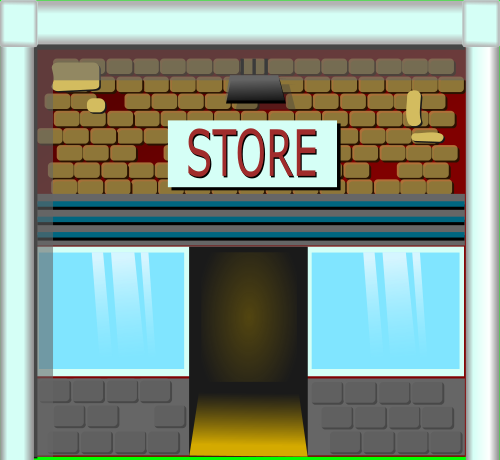
and the strip mall, which includes some of the following:
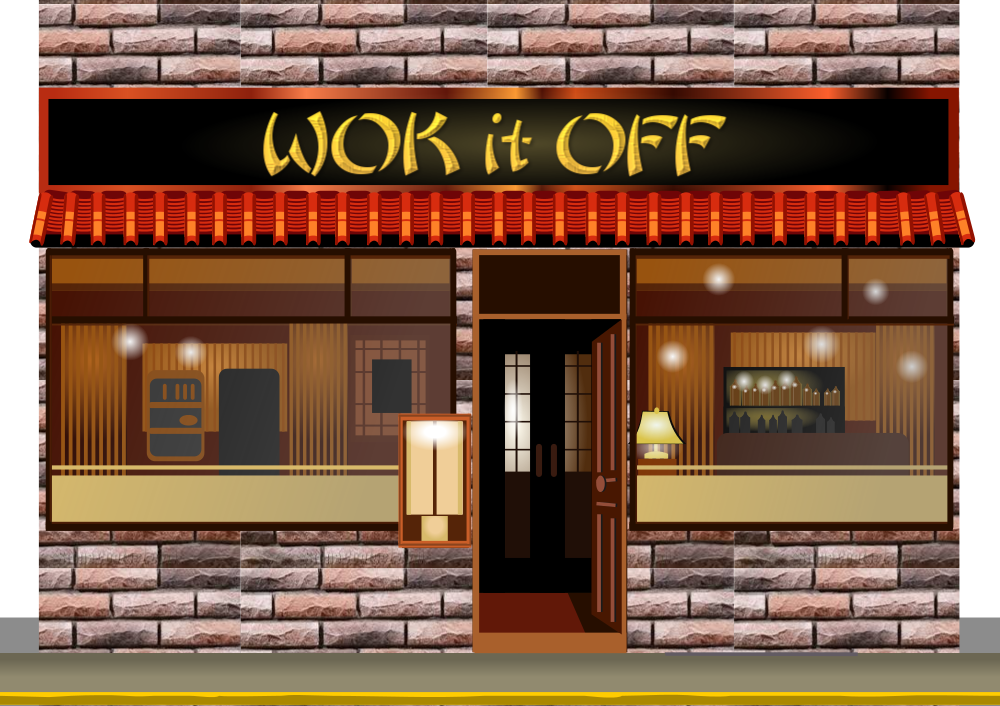
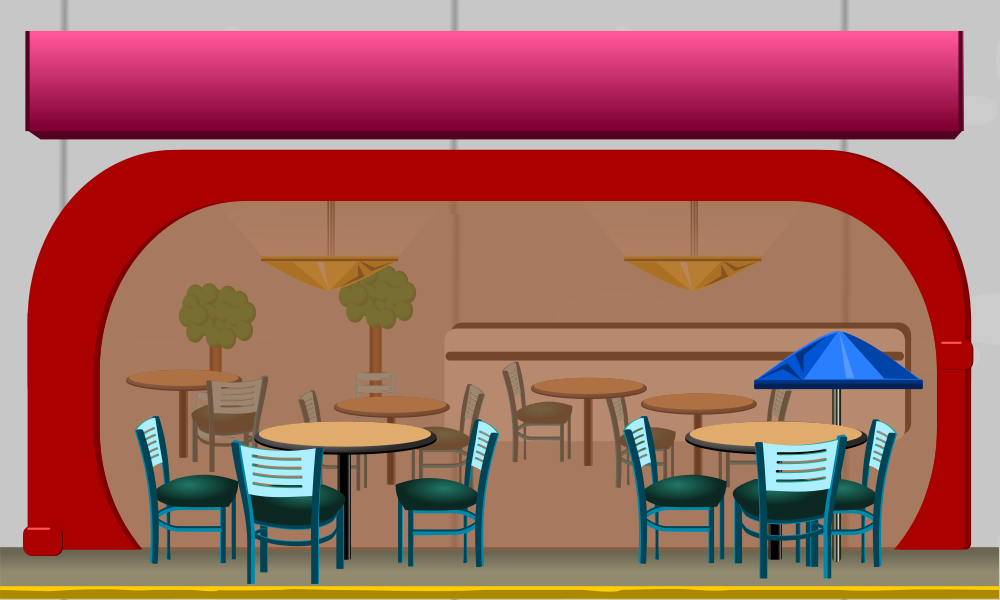

I definitely see a difference, and since consistency is so important, I sincerely hope I manage to upgrade before release.
The point is, Arpy is ready and animated with controls, and he has a level to zoom around in. Yay! Now, I just need to fill it with some other actors. In Street level, those are mostly pedestrians, and a dog. I just finished putting 7 pedestrians together. The male models are already animated. I'm about to add a clip to the video section. And since one of the first people who saw it pointed out an error in the walking animation, I'm also adding a shorter clip with the fix. See if you can spot what's different ;)
Anyway, stay tuned. With any luck, I'll have an actual playable level to show off very soon.
So far, I've been keeping my dev blog at Rocketpotatogame.blogspot.com. In future, I'll be blogging here. Smaller updates tend to go to the Brainscar Games or Rocket Potato fanpage on facebook, so make sure to like those.
A little background/disclaimer:
I am disabled. I am caretaker for my disabled wife, and I have 5 children, one of whom is autistic. I also still have my dayjob making games at Silent Dreams. If I don't update frequently, or even with any kind of regularity, please be patient. I do what I can, when I can.